#Labrador Ornament
Text


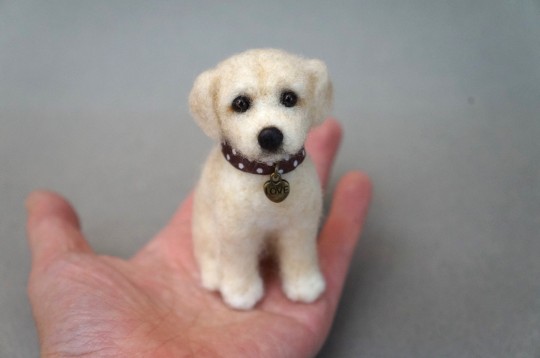
A needle felted puppy. Happy weekend!
#janetsneedlefelting#crafts#handmade#pet memorial#needle felting#diy#dog art#labrador gift#labradorpuppy#labrador retriever#Labrador Ornament#puppy
192 notes
·
View notes
Text
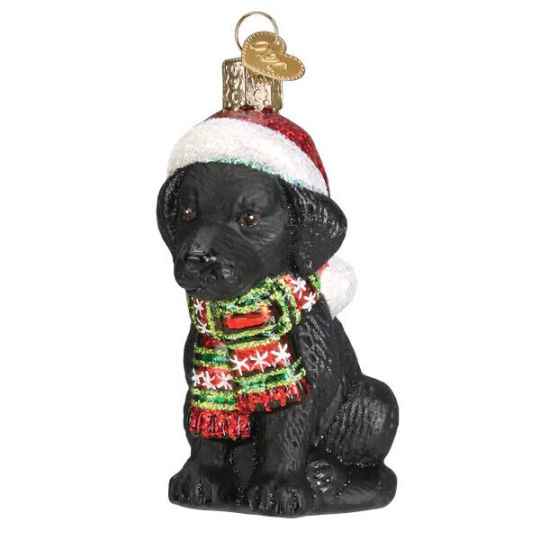
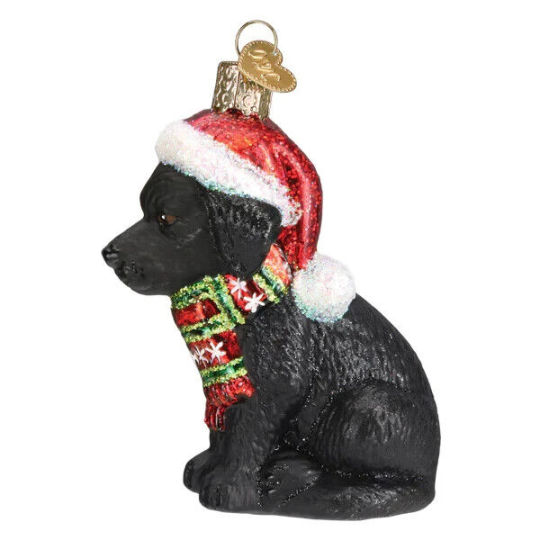
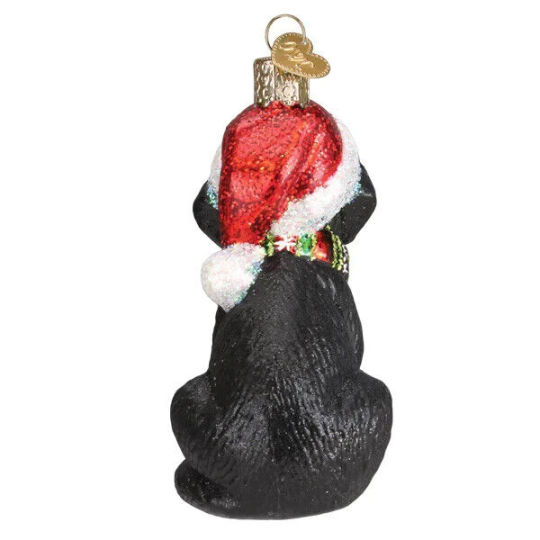
Old World Christmas HOLIDAY BLACK LAB PUPPY (12638) Glass Ornament w OWC Box Holiday Home Store
0 notes
Text
written for @wait-whos-batman DCU Valentine's Day event! It's all over the place, mostly because Jason is high - though there isn't any explicit mention of drugs other than one or two sentences!
It's desi!reader. Lemme know if you want links to movie/song/string ornament! Jay quoting the Hobbit because that's my obsession these days!

You weren’t concerned when the racket at your door started. A little confused, perhaps, because usually Jay loved giving you heart attacks via jumpscares. However, this was hardly the first time he had tried to pick a fight with your apartment door.
The first time it had occurred, you two weren’t exactly friends - just classmates who collaborated on assignments. It hadn’t stopped him from waking you up at 3 am with his insistent knocking. He had then raved on about the brilliant fucker who almost had him believe in a hopeful ending to Romeo-Juliet and why the heartbreak is his due in this existence. You just let him have it after you figured out he had been talking about the movie goliyon ki raasleela ram-leela. It wasn’t like he was wrong and did apologize for barging in after running out of steam. He was the only person in grad school who spoke decent Hindi and you weren’t letting him go.
Your friendship over shared cups of masala tea had taught you three things about Jay:
1. was a hopeless romantic and always cursed out tragic endings
2. His eyes glowed green during his impassioned speeches
3. He loved dramatic entrances which ranged anywhere from silent to boisterous.
Hence you weren’t particularly worried when something metallic thudded against your door, adding the clanking of your string ornament in the mix. But when the door finally opened - you just gawked at the glowing red helmet in astonishment.
“What the everloving fuck” Yes - that summed up your sentiments pretty well.
“The key works” Red Hood’s distorted voice offered in lieu of an answer.
“I am on the quest - a perilous one” He proclaimed.
You definitely never handed apartment keys to the vigilante in question. The only person you trusted enough to have it was your best friend from college - Jay Todd Peterson.
Fuck - did Red Hood get the key from Jay? Why would Jay? Did he hurt Jay for them??
You stupidly stared at the Red Hood trying to make sense of the situation. The fuck was he talking about?? You hadn’t realized you verbalized your thought until Red Hood responded.
“You told me I can crash here if I want -” Could a mechanical voice be pouting??
“Guess not - “ he murmured as his shoulders drooped, his whole body sagging in defeat as he turned to leave.
This was a gesture you recognized - it was Jay equivalent of puppy dog eyes - the one he had perfected to use as a lethal weapon so that you would be swayed to do his bidding. It was like watching a sad labrador, always tugging at your heartstrings.
“Jay?” you hazarded a guess and Red Hood turned around - arms crossed on his chest in the classic ‘I’m stubbornly sulking - but you have to figure out the problem ’ pose.
“Oh for heaven’s sake.” You grumbled and struggled to drag your best friend - who seemed more interested in patting your head -inside.
“I am on a perilous quest -” Jay declared again once he settled on the couch and without the distorted voice modulator it didn’t sound like a malevolent threat.
You tried to hold your laughter but the sight of Jay sprawled on your couch, wringing his hands like a punished child and quoting The Hobbit was adorable. (If one disregarded several weapons on his person). The green of his irises was barely visible but other than that there weren’t any injuries.
You nodded dumbly - some part of your brain stuck on your best friend being a crimelord. He didn’t need any prompting because he continued in a solemn voice,
“I am looking for someone to share in an adventure that I am arranging, a partner in crime you could say, and it's very difficult to find anyone.”
Whoever had drugged him (you suspected Ivy ), clearly had thrown him for a loop. It would be better if he stayed here instead of galavanting off on the streets, ruining Red Hood’s badass reputation. So you fetched him water and midnight snacks, settling in for the show. This should be fun.
“Sorry! I don't want any adventures, thank you.” You played along and were rewarded with a bright smile.
“There is nothing like looking if you want to find something. You certainly usually find something, if you look, but it is not always quite the something you were after.” He fired off.
“And what would you be looking for, kind sir?” you asked, struggling to match the serious tone of his voice.
"In vain have I struggled. It will not do. My feelings will not be re - repe- re-p re-ss-ed." Jay flopped on his back with his head in your lap, when he failed to properly speak in an over-the-top British accent.
“I always wanted to be in love you know??” his whisper was so soft and you strained to hear him.
“I want someone just for me. Where one is in love even before they know it. I want love like Arwen loves Aragorn, wholeheartedly - all good and bad, worse and worst!. No takebacks! Someone who is there always supporting me, loving me. I want to hold on to them. Like you know - they would be the absolutely best decision I would ever make. But good decisions aren’t exactly my forte.” He rambled as if confessing a sin.
You opted for listening to him, reciprocating his trust by safeguarding his secrets deep in your heart, and continued running your fingers through his hair, lightly scratching his scalp. He heaved a contented sigh with closed eyes, burrowing closer and for a moment you thought he had fallen asleep.
Jay had never opened up quite like this. Listening to him divulge his deepest-held thoughts while high as a kite, felt like cheating. He wouldn’t want you to know his secrets, but then again that ship had sailed when he had shown up at your doorstep in the Red Hood regalia.
Maybe this was something he had to get off his chest?
“wo haseen murti pyaar ki, milegi muze kabhi naa kabhi… muze jiske pyaar pe ho yakeen; wo pari, wo hoor, wo nazaneen” he hummed the mangled a song under his breath.
“Sing that song to me.” he nudged your knee, “The one where they flap like birds.”
He irritated you until you crooned it, chiming in whenever he remembered the lyrics.
“Why am I Arkenstone?” You wondered aloud. Jay’s erratic mood affecting you as well. It wasn’t as if you hadn’t considered a possible romantic dynamic between you two, but Jay always had some invisible boundary he would never cross.
“Have I told you how much I admire you?” He clutched your other hand in both of his. He softly placed it on his beating heart.
“Your soul shines like silver in the firelight, like water in the sun, like snow under the stars, like rain upon the Moon!”
“Because you are a great and wondrous jewel. And I would go mad if I ever lost you to anyone else!” he answered simply and sincerely, borrowed eloquent quotes long forgotten.
“Would you love me even if I were Gollum?” He questioned sleepily, his thoughts running away from him again.
You peered at him for any lie, but his heartbeat didn’t even waver under your palm. He was relaxed as if he hadn’t just tilted your world. What were you going to do with this silly man?
You wanted to ask him if he really meant it or if it was just a rambling of a drugged man. You didn’t have the mental capacity to unpack all the implications tonight.
“Yes, I would,” you whispered against his hair, softly kissing his forehead. "very much so, good and bad, worse and worst!"
There would be a lot of hard conversations the next morning, but tonight you would dream about this absurd man wrapped in your arms.
#dcuvalentinesday2024#jason todd#jason todd x reader#jason todd x you#red hood#redhood x reader#fluff#i know it's weird
55 notes
·
View notes
Text
🎄 Christmas 2022 🎄
Festive Melody by @crazybutgood (90 words, rated G)
For show-and-tell one day, one of the children at Harry’s at-home daycare brings an intriguing Christmas ornament she’d found collecting dust in her attic. After fiddling with it, she soon learns why it was banished when it starts playing Christmas songs on a loop, impossible to stop, driving everyone up the wall.
An Unlikely Hero by @st0rminthecassl (172 words, rated T)
Draco is beside himself that someone would treat a hero this way.
This is for me? by @phoebe-delia (283 words, rated G)
"Who's it from?"
Harry shrugged with poorly-feigned nonchalance. "Check the card."
Decorating by MarsInsane (304 words, rated G)
Draco decorates.
A fine piece of candy by @lalalaartje (466 words, rated G)
When Harry keeps telling Draco he doesn't need a Christmas gift from him, Draco comes up with a silly little plan.
Advent Calendar by MarsInsane (469 words, rated G)
Short little fluff piece featuring Drarry and candy.
Playing Games by @ladderofyears (505 words, rated T)
Harry and Draco talk, and play board games, in a Christmassy Twelve Grimmauld Place.
Wintergreen by @dreamsinthewitchouse (1,430 words, rated T)
Draco shoots him a scathing glance, but the corner of his mouth quirks up into something resembling a smile. “Okay, then.”
“Okay you want me to kiss you?”
“Okay I want you to kiss me.”
Merry, Muggle, and Magical by @typewriteringalaxy (2,478 words, rated G)
Draco and Harry on the hunt of the perfect gift for each other.
Word on the Street by cloudlings (6,131 words, rated E)
The quill finishes writing, and Harry’s instincts warn him that the worst hasn’t even left the reporter’s mouth yet.
Then he speaks again.
And there it is.
“Let’s talk about Draco Malfoy.”
The Red Jumper by toomuchplor (14,907 words, rated E)
Draco's plans for Christmas Eve are as follows:
1 - Sleep as long as possible
2 - Have sex
3 - Drink wine
4 - Eat too much food
5 - Repeat above
It’s just gone eight in the morning when Harry begins to derail Draco’s plans.
First Christmas by orpheus87 (22,680 words, rated G)
Sometimes, being floored by a Labrador isn't such a bad thing.
Harry and Draco went to the same university and although they each knew who the other was, they weren't close friends. When they bump into one another five years later, in a park in York, one conversation leads to another and they soon become closer than they imagined.
Aere Perennius by @onbeinganangel (23,195 words, rated M)
Upon Narcissa’s death, Draco Malfoy lets his best mate decide on a new place for him to live and set up his flower shop. Pansy, the meddling witch that she is, picks Godric’s Hollow. Specifically, the oh-so-conveniently available space next to Harry Potter’s bookshop.
What could possibly go wrong? According to Hermione, only everything. According to Ron, this is exactly what Harry needs. Blaise is only there to watch the whole thing crash and burn, and Luna saw it coming years ago.
Changing with the season by @harryromper (36,255 words, rated T)
Harry's determined the first time he hosts the extended Weasley clan for Christmas will be a success. The Grimmauld Place advent calendar has other ideas ... until Draco shows up to help.
You Make It Feel Like Christmas by gglow (52,163 words, rated M)
At thirty years old, Draco Malfoy has successfully obtained a reputable degree in Ancient Languages, has proceeded to shut himself into the basement of London Library as their Head of Archives, and is wilfully nursing a problematic relationship with a man Blaise eloquently describes as “a sleazy piece of trash”. So yes, he’s got it all worked out, ta ever so.
It’s only too bad that when Harry Potter—the youngest Head Auror in a century—happens to need Draco’s help with a case, a string of encounters ensues that turn Draco’s pre-perceptions of him on their head. To make matters even worse, Potter brings Draco tea, and carries his bags, and says things that are much too straightforward for comfort. And if it makes Draco question why he ever hated the speccy git in the first place, well, that’s no one else’s business but Draco’s… right?
Will flying South for Christmas spare Draco from heartache? And does it make sense to salvage the dwindling fire with his elusive beau, or will the kindle of a new flame give Christmas a whole new meaning?
A Melody of You & Me by @academicdisasterfic (64,838 words, rated E)
Draco Malfoy has a Christmas choir competition to win, and Harry Potter has an orphanage that needs funding. When Luna Lovegood intervenes, they agree to help each other out: Harry will join the choir if Draco chooses to sponsor his charity.
But agreeing to work together also means getting to know each other again - in new and unexpected ways.
Ft. a chaotic festive choir, scheming friends, a healthy dose of mental health issues, one very irritating ex, and boys learning how to love and be loved.
Kaleidoscope by Saras_Girl (104,284 words, rated E)
If Harry’s honest, the last thing he needs is a house full of Draco Malfoy, but partners are partners, and perhaps, the thing he wants the least will turn out to be absolutely everything. 2021 advent fic, completed.
Be sure you don't miss out on @babooshkart's amazing art and fic recommendation for A Melody of You & Me!
❤️ As always, if you find a fic you enjoy, please remember to leave the creator a kudos or comment ❤️
🎄Lots of Love and Merry Christmas!🎄
#Christmas 2022 drarry fanfic rec list#drarry christmas#drarry#drarry rec list#drarry fanfic rec list#drarry fanfic#drarry fanfic recs#the drarry librarian#lots of love and happy christmas#lots of love and Merry christmas#thedrarrylibrarian#harry x draco#draco/harry#harry/draco#draco malfoy#harry potter
108 notes
·
View notes
Text


Pewter Newfoundland & Labrador 2009 Christmas Ornament Daddy's Little Star
#pewter tree ornaments#pewter ornaments#christmas ornaments#holiday season ornaments#tree star#silver pewter plaque#home decor#christmas decor#swtradepost
11 notes
·
View notes
Text
October 6, 2023
Raspberries in October?
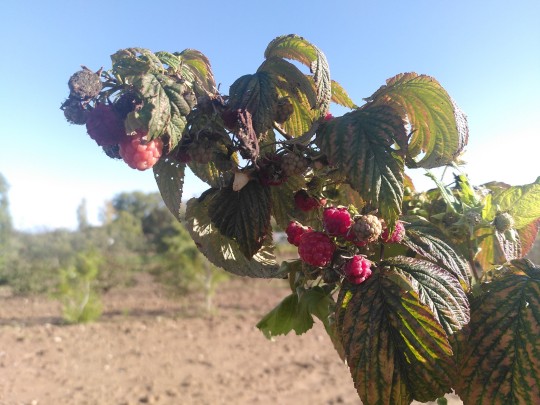
On Friday we were asked to collect tree and shrub fruits, or what was left of them. I was very surprised to still be able to find my favorite compound fruit, raspberries – for me those are exclusively associated with summer.

Not a time where trees already have colorful leaves.
But some other people even still found sweet grapes, at about 58°6' N. (Good luck trying to do that on the other side of the globe, in the conifer or needleleaf forest of Labrador or northern Ontario) And in a local newspaper I read that you can now grow sweet potatoes here as well, tubers I more associate with Mexico and Hawaii. Geez.
More appropriate for this climate and season, I also found apples (the small round red fruits are also apples, of ornamental apple trees with purple leaves) pears, chestnuts, acorns, cones, stonefruit, winged fruits of the maple tree, and more.


Spread out with Estonian names of the plant and fruit type. Will provide translations if anyone asks, unfortunately don't have the time to do it all right now.
11 notes
·
View notes
Text

Fabulous critters both--but who is the most fabulous?
American woodcocks live in the forests of eastern North America, excellently camouflaged against the brush. They have many colloquial names, including the timberdoodle, the bogsucker, the hokumpoke, and the Labrador twister. They are crepuscular and forage for earthworms and other invertebrates where soil is moist by probing the soil with their bills. They will also rock their bodies back and forth, which provokes underground worms into moving around and thus becoming easier to detect. Males display for females by performing a complex spiraling flight.
Named for the males’ ornamental collars, ruffs are a migratory species of sandpiper that breed in the wetlands of northern Eurasia and winter in the tropics of Africa. They forage by probing with their beaks in soft mud, eating mostly insects but also grains. They are very social and migrate in large flocks that can contain thousands of birds. Ruffs have a very complex mating system, as there are three “forms” or variations in plumage among males. Most males display the extravagant plumage for which the species is named; these males court females and defend territory in a traditional manner. Satellite males, bearing similar fancy plumage but with a white ruff, are a smaller group, and do not establish their own territories but rather mate with females in another male’s territory. The third male form is rare, about 1% of the population, and is a female mimic: with identical plumage to the females, these “faeders” sneak into mating territories without attracting attention from territorial males.
2 notes
·
View notes
Note
Oh, we finally get someone to ask for something after a few months! Wow.
Anyways, can we have a Chiho Sasaki (The Devil Is A Part Timer) fictive stimboard with christmas/xmas themes and how she actually likes working retail during the holidays even if she hates the people/customers being a bit mean?
And all of the glitter and ornaments!
We think she might just like christmas as a concept or aesthetic honestly.
- Labrador Anon
Absolutely!! B)
Mod Haze (🎮Greyson)
#unrelated but mask of my own face has been stuck in my head all day. send help#🎮#mod haze#labrador anon
2 notes
·
View notes
Text
If you have ever interacted with your state Fish and Wildlife Service, or If you have ever read anything with a large mainstream US based conservation NGO ( like Audubon or the National Wildlife Federation) you have probably come across “ The North American Model of Wildlife Conservation” ( or some variation thereof ) the idea is that conservation, at-least on this continent, is somehow crucially tied to hunters, that hunters provide most of the real support for conservation, either financially as hunting licenses, duck stamps, and taxes on equipment help fund state and federal conservation programs, or in terms of being an interest group, as hunters want wildlife habitat/wildlife so they can hunt, and that this is a great innovation of the US/Canada we should be patriotic about ( in a vaguely rural Red Tribe way)
To get a sense of what makes hunting in the US different from what is before, we have to go back to Europe, throughout most of European history since at-least the Middle Ages, hunting, at-least of large “game” animals like deer, boar, bison, and wild cattle. Was an Aristocratic activity, It was often restricted legally from commoners at all. ( If you ever heard the funny factoid about The Queen owning all the swans in Britain, this is why) . Aristocracy wanted to hunt animals, and this motivated them to conserve There populations, in part by restricting and regulating hunting to avoid the tragedy of the commons . We also see them maintain large areas of non cultivated semi-natural space as “ hunting parks” so The wildlife has habitat to maintain their population in , so they can continue to hunt them.
The last wild European Bison populations ( before reintroduction from captivity) belonged to the Russian Tsars and before that the Polish-Lithuanian Aristocracy, from the 13-17th century the last Aurochs populations could only be hunted by Aristocracy and then Royalty, and a number of British cattle breeds ( Chillinghan, British White Park , Vaynol, British White) are descended from populations of Feral White cattle kept as ornamentation and hunting victims on large semi forested/ semi-meadow parks since the Middle ages
I want to highlight this was not a uniquely European Phenomenon, for example, In China, the last herd of Milu Deer, in the late 1800’s , was maintained in the walls of The Nanyuan Royal Hunting Garden, owned by the Emperor Tonghzi. Eventually the garden was stormed by German Soldiers, and the only reason the species survived is some were exported beforehand from the Garden to European zoos. You can also look at the Establishment of Game Reserves for the white elite in Southern Africa.
As european settlers colonized North America, armed with guns and free from Aristocratic regulations, and eventually coupled with the rise of large industrialized populations in the North East, they engaged mainly in not the subsistence, sport hunting, or even hunting of pests your probably more familiar with, but Market-Hunting , hunting, especially unregulated and at industrial scale , for the sale of the animals body parts as commercial goods, Meat, Leather, Fur and Feathers from wild land animals were sought in large numbers by the general public, including in densely populated areas.
Elk and other deer, Geese, Heath hens, Passenger pigeons, Carolina Parakeets, pronghorn, Wading birds, Bison, Beaver, Fishers, american Martens, sea Otters, sea mink, trumpeter swan, Labrador duck, Great Auk, and many other species had There populations severely impacted, often to the point of extinction, by this commercial scale hunting for their body parts
Meanwhile, we started to see the formation among the settlers, at-least the Upperclass ones, of an American Identity in contrast to that of the English or other Europeans. This identity thought of themselves as tougher, more rugged, less civilized ( but better suited for “civilizing”, this wasn’t seen as in conflict, like how a wild tough man may tame a wild Bronco) than the Europeans, and was tied to the idea of the US as a Wild uncivilized land not yet altered by man ( and of-course the dehumanization of native Americans and the Denial that they have shaped and altered the land severely). Think of Davy Crocket, and Pail Bunyan, and Buffalo Bill. Look at The Hudson River school of landscape painting, and how it diverged from older European styles, the focus on wild landscapes instead of farmland, the sharp jagged rocks and landscape formations , the twisted trees and snapped broken branches, the dramatic storm clouds, and rushing waterfalls. It is nature wild, but particularly nature powerful and rugged, untamed and full of rough “imperfections”, this is how the US Naturalists of the time saw themselves and There country in contrast to Europe.
Now the Environmentalist movement as we know of it was really kicked off by Rachel Carson’s book Silent Spring, in 1962. That is when it went mainstream, when we see a greater focus on pollution, and the start of the understanding of different species as playing an important role in supporting a functioning ecosystem rather than being set pieces on the landscape
Before this Modern Environmentalist movement however , we had an older Conservationist movement, that was based in this rugged American Identity I discussed already. These people were “ Naturalists” , mostly outdoorsy upper class white men, who engaged in sport hunting alongside other outdoorsy leisure activities , There focus was on conserving natural resources, like Game Animals or Timber, so they could be exploited in perpetuity, as well as preserving scenic natural areas for themselves to hang out in and maybe shoot something in.
Teddy Roosevelt’s role in the timber industry is a great non-animal example of how these people see the natural world, he brought much needed regulation and reform to the Lumber industry, without which we might have lost all our forests and the US ran out of wood, but he only saw a forest as a source of wood, not as an ecosystem, so today large areas of federal/state land, that are in theory natural areas, are leased out to the timber industry to operate what are essentially monoculture farms, no more a forest than an apple orchard, but labeled as forests by the US government.
So these upperclass sport hunters, who recognized that the demands of the Market economy were unsustainable, put extreme regulations into place. The Migratory Bird Treaty Act, was aimed mainly at protecting birds, especially wading birds, from the feather trade for women’s hats, as was the first National Wildlife Refuge, Pelican Island. hunting and fishing regulations and licenses were introduced, operated by state governments, that restricted how many animals could be taken by how many people, Regulations on the production and sale of meat restricted Market hunting for venison, poultry and other meats for the table out of existence. The International Whaling Commissions Moratorium heavily restricted commercial hunting of large Whales globally, and among other things, the first National Park, Yellowstone, was note worthy for being home to the last wild bison herd in the US, with continued hunting in the park labeled “ poaching” .
Today the fur trade is all that’s left of Market Hunting of warm blooded native animals in the US and Canada, and even then it it only exists still as means of supplemental income and a hobby, not as a large scale industry and means of living.
So while the Conservationist of old were sport hunters motivated by sport hunting, their success largely if not mostly was due to being able to control, restrict, regulate and curb hunting. Including regulating Market Demand related hunting practically out of existence. The focus has been on how to control hunting pressure, giving money from hunting activities to the Fish and Wildlife Services makes extra sense in the light that they mostly exist to keep the hunters in line in the first place. If there was something novel about the North American Model, it wasn’t hunting incentivizing conservation, or even putting the wildlife into government hands, It was the democratization of hunting, while avoiding the tragedy of the commons, and the Near Elimination of trade of terrestrial wild animals based goods.
While it’s true Hunters give a share of funding to “conservation” larger than There share, it’s still a tiny share of the total ( 6% as of 2015 according to one study, likely decreasing, while they were 4.6% of the population in 2020 ( combined with fishers 18% in 2016)), and much of that is due to peaceful wildlife/nature goods, like high end cameras, Kayaks, or camping equipment, not getting the Conservation Taxed, additionally a large share of those funds would not be needed, or could be used for other things, without hunters , as they wouldn’t be needed for hunting regulation/support in the first place. We could also see great support for mushroom or wild plant foraging for income, or better yet, better funding from the general pot of State or Federal governments. But either way , the vast majority of funds, 94%, is already from the General public, not hunters specifically)
( This isn’t even to get into the ways advocate encourage damaging environmental practices or damage the environment themselves even under this system, but I’ll leave that to another post maybe, this is already extremely long)
The North American Model of Wildlife Conservation is based on the democratization of what we do with wildlife, and the regulating out of entire forms of hunting entirely. , as the general public supports conservation and protection of wildlife even if they don’t hunt, As hunters make up a tiny shrinking share of the population ( 7.7% in 1960 and shrinking since) , are not a crucial source of conservation funds, and a minor but large and growing share of the public disapproves of hunting, opposing hunting, and decentralizing hunting interest groups from wildlife and ecosystem management discussions , is not only the morally right choice, but in the spirit of the North American Model hunting advocates praise.
0 notes
Text
Second partial
State of Nuevo León
Traditional fairs of this state are the apple fair, the walnut fair, the agricultural fair and the Villaseca fair. On the other hand, religious festivities are presented, such as the celebration of the Virgin of Guadalupe.
Galeana Town (Nuevo León)
Galeana is a municipality rich in traditions. From its villages was born the Dance of Chicaleros, famous for its participations during Easter in the Laguna de Labradores. It also has crafts in ixtle and wood, piñatas and also highlights its landscapes such as the 'Pozo del Gavilán'.
Piñata

What is it?
A piñata is a container inside which houses toys and sweets, and which is broken as part of a celebration so that attendees can take its contents. The term comes from the Italian word pignatta. The piñata usually has a cardboard structure, decorated with papier-mâché and various ornamentations.
Materials
• Clay pot
• Glue or silicon
•Colored paper
• Stick
What is it used for?
Hitting the piñata until it is broken symbolizes the fight against evil, and sweets and fruits represent the goods obtained by preferring good over evil.
Who created it?
It emerged in the 16th century, when the friars began to celebrate the "amass of aguinaldo" or "posadas" during the days before Christmas. In them, the piñata was used as an allegory to evangelize the inhabitants of the region.
0 notes
Photo

Black Labrador Retriever Get In Two Sided Car Ornament_ Price From: 32.99$ | | [Buy it now at] : https://hipposfashion.com/product/black-labrador-retriever-get-in-two-sided-car-ornament_/ https://www.facebook.com/HipposFashion/✅ https://twitter.com/hipposfashion✅ https://www.instagram.com/hipposfashionstore/✅ https://www.tumblr.com/hipposfashion✅ Product Information Weight Lightweight, won't weigh down branches Imprinting Features Full-color artwork, photos, or logos for bright and crisp colors Hanging Features Hole for the hanging string, Gold-toned string included Decoration Styles Make your tree hip, traditional, or funky to suit your unique style Customization Options Set of custom-made Ceramic ornaments for a personalize...
0 notes
Text

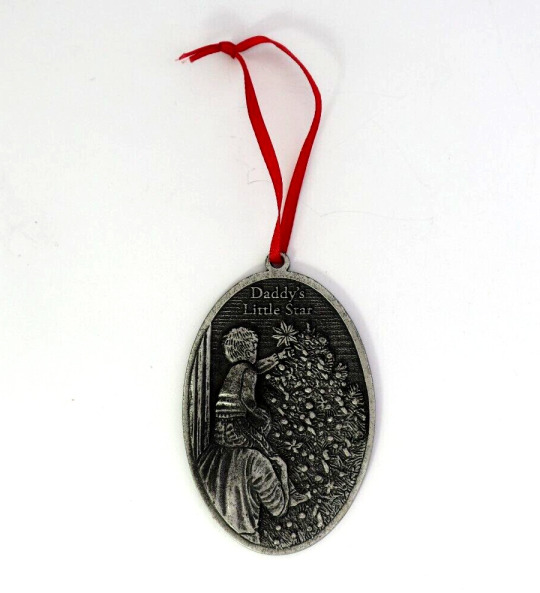
Pewter Newfoundland & Labrador 2009 Christmas Ornament Daddy's Little Star USA || SWtradepost - ebay
#pewter tree ornaments#christmas tree ornaments#holiday season decor#pewter decor#pewter hanging tree decoration
0 notes
Photo
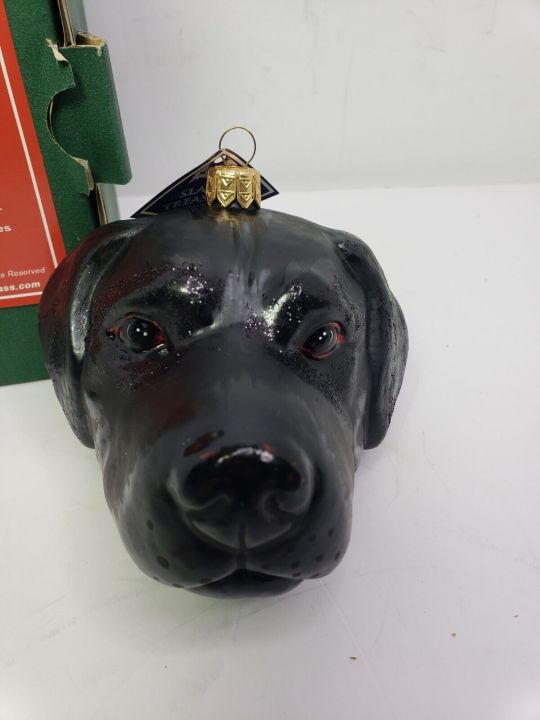


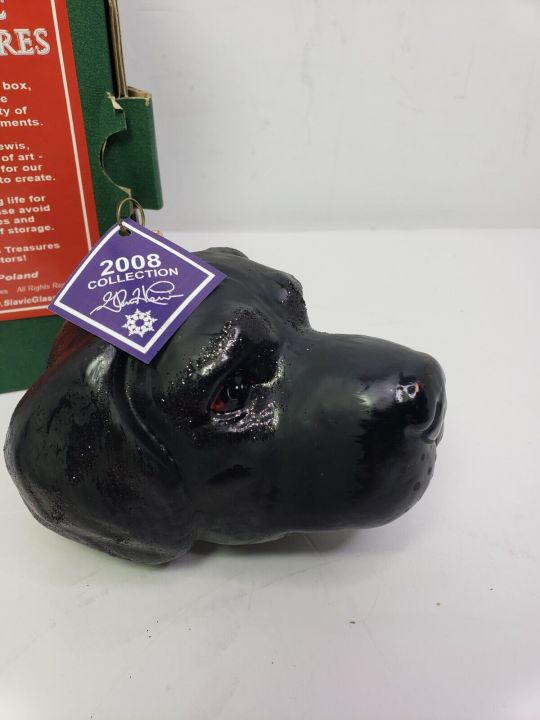
Slavic Treasures Black Lab Dog Head Blown Glass Christmas Ornament w Tag ebay vintagesouthernsoul
0 notes
Photo

• 🎅🎅🎅Bass Pro Shops Holiday Decor🎅🎅🎅 • 💲💲💲On Sale Now $4.98💲💲💲 • Bass Pro Shops Labrador with Antlers Ornament • While supplies last/Prices can change at anytime • AD @Divabandits https://mavely.app.link/e/p5ucJfdgaFb
0 notes
Text
Brad Tuck & Rosemary Lawton: The Christmas Ornament
youtube
It’s December 1st — just 24 days til Christmas.
For me, there’s no better way to get into December mode than by breaking out the Christmas music.
Today, I’m listening to the brand new offering ‘The Christmas Ornament’ from Brad Tuck and Rosemary Lawton.
It’s upbeat and wonderfully touching.
“We decided to tell a story about Brad's dad,” writes Lawton, “who used to make Christmas ornaments. He used to love helping his dad in the shed every year. His family and friends still display them in their houses year round.“
I relate. As I look around my house and see the Christmas ornaments, I realize the ones I love are the ones that are connected to the people I love.
This song is definitely going on my Christmas playlists — in 2023 and beyond.
Check out the video for ‘The Christmas Ornament” above, and their brand new Christmas album, Songs for Christmastime, is available today.
More Christmas and Holiday Music from Newfoundland & Labrador
Stay tuned for more great Christmas songs from Newfoundland and Labrador.
I'm a big fan of traditional Christmas music, I love to hear a modern rendition of a 300 year old carol but, occasionally, a brand new song comes to my attention and dominates my Christmas listening. Newfoundland and Labrador's musicians have been holding their own in both regards. I’ll be sharing local songs —both old and new— from now until Christmas in my 2023 NL Music Advent Calendar.
Follow along on Instagram stories and get playlists here.
Check out: 2022’s NL Christmas music calendar.
1 note
·
View note
Text
During the era of British colonial rule in India, which lasted for nearly two centuries from the 18th to the 20th century, the British Empire introduced numerous plants and animals to the Indian subcontinent. These introductions were driven by various purposes, including economic interests, scientific exploration, and personal preferences of the British administrators and settlers. The British brought in a diverse range of species, from agricultural crops and timber trees to ornamental plants and exotic animals.
One of the significant contributions of the British was the introduction of tea cultivation in India. Tea, which originated in China, was brought to India by the British in the early 19th century. They established tea plantations in regions such as Assam and Darjeeling, leading to the growth of the Indian tea industry that continues to thrive to this day.
Coffee was another crop introduced by the British. Coffea arabica, the primary species of coffee, was brought from Africa and cultivated in areas like Karnataka, Kerala, and Tamil Nadu. The British played a crucial role in the establishment of coffee plantations in southern India, contributing to the growth of the Indian coffee industry.
Rubber, sourced from Hevea brasiliensis trees, was introduced to India by the British from Brazil. Rubber plantations were established in states like Kerala and Tamil Nadu, marking the beginning of commercial rubber production in the country.
Indigo, a plant used for producing blue dye, was extensively cultivated by the British in India. Indigofera tinctoria was grown in large quantities to meet the demands of the textile industry. However, this led to social and economic repercussions as local farmers were forced to cultivate indigo instead of their traditional food crops, which eventually contributed to the Indigo Revolt.
The British also introduced various tree species for their timber and ornamental value. Eucalyptus, known for its fast growth and versatile uses, was brought to India. Acacia species like Acacia nilotica and Acacia auriculiformis were also introduced for their timber and fuelwood properties.
In addition to plants, the British brought in animals for various purposes. They introduced different horse breeds, including Thoroughbred and Marwari, for transportation, agriculture, and military purposes. Various dog breeds, such as Labrador Retrievers, German Shepherds, and Bulldogs, were also introduced for companionship, hunting, and guarding purposes.
The British also played a role in promoting the cultivation of different varieties of mangoes and introduced ornamental plants like chrysanthemums. Furthermore, they introduced English Oak for its timber and aesthetic value.
While the introduction of these plants and animals had both positive and negative impacts on India's ecosystems, economy, and society, it undeniably left a lasting influence on the country's agricultural practices, horticulture, and biodiversity.
Tea
Tea holds significant historical and cultural importance in India, and its cultivation and production were greatly influenced by the British during the colonial period. Here are some details about tea in India:
Introduction and Early Cultivation:
Tea (Camellia sinensis) was introduced to India by the British in the early 19th century. The first successful cultivation of tea in India started in 1823 in Assam, a region in northeastern India. The British discovered that the Assam region had favorable conditions for tea cultivation, similar to those in China, where tea originated.
Assam and Darjeeling:
Assam became the primary region for tea cultivation in India. The British established numerous tea plantations in Assam, taking advantage of the region's fertile soil and favorable climate. Today, Assam is known for its robust and malty black teas.
Darjeeling, located in the foothills of the Himalayas in West Bengal, was another important tea-growing region introduced by the British.
The British recognized the unique characteristics of Darjeeling tea, which is known for its delicate flavor and distinct aroma. Darjeeling tea is often referred to as the "Champagne of Teas."
Indian Tea Industry: The British played a significant role in developing the tea industry in India. They established tea estates, brought in modern cultivation techniques, and introduced machinery for processing tea leaves. They also established tea auction centers to facilitate trade and export.
Types of Indian Tea: India produces a wide range of tea types. The most common types include black tea, green tea, oolong tea, and white tea. Black tea is the most widely consumed and exported type of tea from India. Each tea-growing region in India has its unique flavor profile and characteristics.
Economic Impact: The cultivation and production of tea in India have had a substantial economic impact. Tea became a major cash crop, and the industry created employment opportunities for thousands of workers, including plantation laborers, tea pluckers, and factory workers. The tea industry continues to contribute significantly to India's economy through exports and domestic consumption.
Tea Gardens and Tourism: The British also established picturesque tea gardens in regions like Assam and Darjeeling. These tea gardens, with their lush green landscapes and colonial-era buildings, have become popular tourist attractions. Many tea estates offer guided tours, tea-tasting sessions, and the opportunity to experience the tea-plucking process.
Cultural Significance: Tea has become an integral part of Indian culture and daily life. India is one of the largest consumers of tea in the world. Tea plays a crucial role in social gatherings, family gatherings, and even religious ceremonies. Popular Indian tea preparations include masala chai, a spiced milk tea, and the famous Darjeeling tea, which is often enjoyed without milk.
Tea cultivation in India owes its origins to the British colonial period. Today, India is one of the largest producers and exporters of tea globally, with a rich tea heritage and a diverse range of tea offerings.
Coffee
Coffee has a rich history in India, and its cultivation and production were influenced by the British during the colonial period. Here are some details about coffee in India:
Introduction:
Coffee (Coffea arabica) was introduced to India by the British in the 17th century. The initial coffee plants were brought from Yemen to the region of Chikmagalur in the present-day state of Karnataka. The British recognized the favorable climate and soil conditions in parts of southern India for coffee cultivation.
Coffee-growing regions:
Karnataka, Kerala, and Tamil Nadu are the primary coffee-growing states in India. Within these states, various districts and regions have become renowned for their coffee production. The hills of Coorg and Chikmagalur in Karnataka, the Nilgiris in Tamil Nadu, and Wayanad in Kerala are some of the prominent coffee-growing regions in India.
Arabica and Robusta:
India primarily cultivates two species of coffee: Arabica and Robusta. Arabica coffee is known for its aromatic flavor and delicate acidity, while Robusta coffee has a stronger and more robust taste. Both species are cultivated in different regions of India, with Arabica being more prevalent in higher altitudes and Robusta being grown in lower altitudes.
Coffee Estates:
The British established coffee estates in various regions of India, modeled after plantations they had in other parts of the world. These estates are characterized by large coffee plantations with shade trees, often incorporating colonial-style buildings and infrastructure. Some of these estates have been preserved and transformed into tourist attractions, allowing visitors to experience the coffee-growing process firsthand.
Coffee cultivation in India, influenced by the British during colonial rule, has evolved into a thriving industry.
Indian coffee is known for its unique flavors, high-quality beans, and diverse offerings. It continues to be an important aspect of the country's agricultural and cultural heritage.
Rubber
Rubber has played a significant role in India's agricultural and industrial sectors, with its cultivation and production influenced by the British during the colonial period. Here are some details about rubber in India:
Introduction:
Rubber (Hevea brasiliensis) was introduced to India by the British from Brazil during the late 19th century. The British brought rubber seeds and established plantations in regions suitable for rubber cultivation.
Rubber-growing regions:
The primary rubber-growing regions in India are Kerala and Tamil Nadu. The Western Ghats mountain range, with its favorable climate and suitable topography, provides ideal conditions for rubber cultivation. Within these regions, specific districts like Kottayam, Pathanamthitta, and Kanyakumari have emerged as major rubber-growing areas.
Rubber cultivation, influenced by the British during colonial rule, has made India one of the major rubber-producing countries globally. The rubber industry continues to contribute to India's economy and provides livelihoods for many individuals involved in the rubber value chain.
Indigo
Indigo has a long history in India and its cultivation and production were influenced by the British during the colonial period. Here are some details about indigo in India:
Historical Significance:
Indigofera tinctoria, commonly known as indigo, has been cultivated in India for centuries. India has a rich tradition of using indigo dye, dating back to ancient times. Indigo was highly valued for its deep blue color and was used for dyeing textiles.
British Influence:
During the colonial period, the British recognized the demand for indigo dye in the global market and promoted the cultivation of indigo in India on a large scale. They encouraged indigo plantations and established a monopoly over its production, leading to significant economic implications.
Indigo Cultivation:
Indigo is a shrub-like plant that requires warm temperatures and well-drained soil. It was primarily cultivated in the eastern regions of India, such as Bihar, Bengal, and present-day Bangladesh. Large tracts of land were dedicated to indigo cultivation, and farmers were forced to grow indigo instead of food crops due to oppressive indigo cultivation contracts imposed by the British.
Indigo Trade and Industry:
The British established indigo factories and trading networks to meet the demand for indigo dye in Europe and other parts of the world. Indigo became a profitable commodity, and India's indigo industry thrived under British control.
Socio-economic Impact:
The British indigo plantations had a profound impact on Indian society. Farmers were forced to cultivate indigo under the oppressive system of indigo contracts known as the "Tinkathia system." This system exploited farmers and led to widespread agrarian distress, as indigo cultivation often resulted in lower incomes and food scarcity.
Indigo Revolt:
The hardships faced by the indigo cultivators eventually led to the Indigo Revolt of 1859-1860. Peasants and farmers rebelled against the British indigo planters, demanding fair treatment, freedom from oppressive contracts, and the ability to grow food crops instead of indigo.
Indigo holds a significant place in India's history and textile heritage. While the British influence on the indigo industry had negative socio-economic consequences, indigo remains an important part of India's cultural legacy and traditional textile practices.
Eucalyptus
Eucalyptus is a genus of evergreen trees and shrubs that is native to Australia. Although not native to India, eucalyptus was introduced by the British during the colonial period. Here are some details about eucalyptus in India:
Introduction:
The British introduced eucalyptus trees to India in the 19th century.
They recognized the fast growth, adaptability, and potential economic benefits of eucalyptus, leading to its introduction in various parts of the country.
Eucalyptus Species:
Several species of eucalyptus were introduced to India, including Eucalyptus globulus (Blue Gum), Eucalyptus citriodora (Lemon-scented Gum), Eucalyptus tereticornis (Forest Red Gum), and Eucalyptus camaldulensis (River Red Gum). Each species has its unique characteristics and uses.
Fast Growth and Adaptability:
Eucalyptus trees are known for their rapid growth and ability to adapt to diverse climatic and soil conditions. They can thrive in different parts of India, including regions with varying rainfall patterns and soil types.
Commercial Plantations:
Eucalyptus trees were planted in large-scale commercial plantations for various purposes. The British established eucalyptus plantations primarily for timber production and fuelwood supply. Eucalyptus timber is known for its strength and durability, making it suitable for construction, furniture, and paper production.
Environmental Benefits:
Eucalyptus trees have the potential to provide certain environmental benefits. They are known for their water absorption capacity, which can help in waterlogging-prone areas. Eucalyptus also has the ability to absorb excess groundwater, helping to reduce the water table in certain regions. However, their water consumption and allelopathic properties (chemicals released by the trees that inhibit the growth of other plants) have raised concerns about their impact on local ecosystems and biodiversity.
Controversies and Concerns:
The introduction of eucalyptus in India has been accompanied by controversies and concerns. Critics argue that eucalyptus plantations have negative impacts on native biodiversity, water resources, and soil fertility. There have been instances where eucalyptus plantations have replaced natural forests, leading to the loss of native flora and fauna.
It's important to note that the use and cultivation of eucalyptus in India have both positive and negative aspects. While it has contributed to the timber industry and afforestation efforts, its potential environmental and ecological impacts should be carefully considered and managed.
0 notes